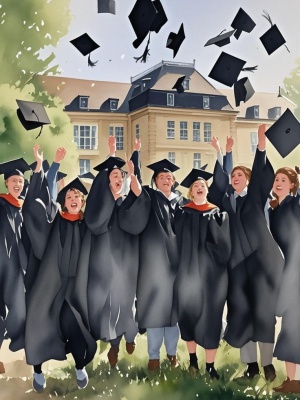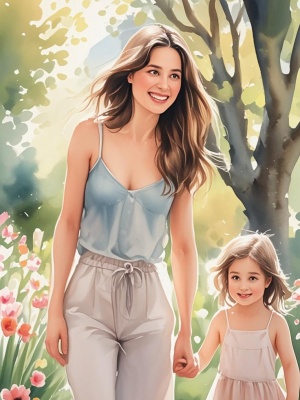The Art of Creating Watercolor Paintings from Photos
Introduction: Capturing Memories in Watercolor
Transforming photographs into watercolor paintings is a beautiful way to preserve memories with an artistic touch. This technique blends photography and traditional painting, creating unique pieces that combine realism with the dreamy, fluid qualities of watercolors. Whether you're an artist looking to expand your skills or someone wanting to turn special moments into art, this guide will explore the process, challenges, and solutions for creating stunning watercolor paintings from photos.
The Process of Converting Photos to Watercolor
Traditional vs. Digital Methods
There are two primary approaches to creating watercolor paintings from photos: traditional hand-painting and digital conversion. Traditional methods involve using actual watercolor paints on paper, while digital methods use software or AI tools to simulate the watercolor effect. Both have their merits, and the choice depends on your skills, time, and desired outcome.

- Traditional Watercolor: Requires artistic skill, proper materials, and time
- Digital Conversion: Faster results, more accessible for beginners
- Hybrid Approach: Combining digital preparation with hand-painting
Essential Tools and Materials
For those pursuing traditional watercolor painting from photos, having the right materials is crucial. Quality watercolor paper (140lb cold-pressed is ideal), professional-grade paints, and a range of brushes will make the process smoother. Digital artists need good photo editing software like Photoshop or specialized AI painting tools that can create convincing watercolor effects.

Common Challenges and Solutions
Problem: Losing Photo Details in Translation
One of the biggest challenges when creating watercolor paintings from photos is deciding which details to keep and which to simplify. Watercolor is inherently loose and fluid, unlike the precise detail of photographs.
Solution: Start by creating a value sketch to identify the essential elements. Focus on preserving the main subject's features while allowing background elements to become more abstract. Digital artists can use layer masks to selectively apply the watercolor effect.
Problem: Achieving Authentic Watercolor Texture
Many digital conversions fail to capture the organic texture and randomness of real watercolor paintings, looking too uniform or artificial.
Solution: For digital work, use texture overlays of actual watercolor paper and brush strokes. Combine multiple filter effects rather than relying on a single watercolor filter. Traditional artists should embrace the natural flow of watercolor, allowing blooms and backruns to add character.
Creative Applications and Ideas
Watercolor paintings from photos have numerous creative applications that make them particularly valuable:
- Personalized Gifts: Transform wedding photos or family portraits into timeless artworks
- Home Decor: Create cohesive gallery walls with watercolor versions of travel photos
- Professional Portfolios: Artists can showcase their interpretation skills
- Event Commemorations: Memorialize special occasions like graduations or anniversaries
Conclusion: The Enduring Appeal of Watercolor Memories
Creating watercolor paintings from photos bridges the gap between photography and fine art, offering a unique way to preserve memories. Whether you choose traditional methods or digital tools, the key is to maintain the essence of the original photo while embracing the beautiful imperfections of watercolor. With practice and the right techniques, anyone can transform ordinary photos into extraordinary watercolor artworks that capture both likeness and emotion.
For those interested in exploring digital options, many artists find success using image-to-image conversion tools as a starting point before adding hand-painted details. The possibilities are as limitless as your creativity.
